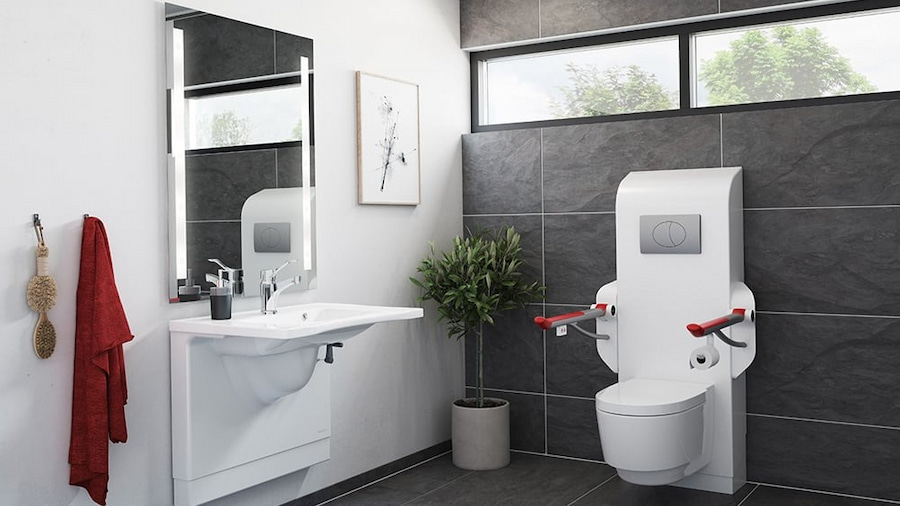Creating a bathroom that is both accessible and safe is crucial for ensuring comfort and independence, particularly for individuals with mobility challenges or disabilities. By incorporating thoughtful design elements and practical solutions, you can significantly enhance the usability and safety of this essential space. Installing a freestanding 1800 x 1200 bathtub can be made more accessible and safe with grab bars and a non-slip mat.
With their adjustable showerheads, they can provide stability and convenience, while features such as a roll-in shower and raised toilet seat promote inclusivity. Lighting, clear pathways, and accessible storage further contribute to a functional and welcoming environment. These adjustments not only improve daily living but also foster confidence and autonomy for all users.
Installing Grab Bars:
Installing grab bars is considered an important step in making your bathroom more accessible and safe. Place grab bars strategically near the toilet and in the shower or bathtub to provide support and stability for individuals with mobility challenges. These bars offer assistance when getting up and sitting down, as well as while moving in and out of the shower. Anchor the grab bars securely to the wall and ensure that they can support the user’s weight. With grab bars in place, individuals can navigate the bathroom with confidence and reduce the risk of slips, falls, and accidents.
Installing Non-Slip Flooring or Mats:
Installing non-slip flooring or mats is crucial to enhancing accessibility and safety in the bathroom. These measures significantly reduce the risk of slips and falls, especially in wet conditions. Non-slip flooring provides stability and traction for individuals with mobility challenges or disabilities, offering peace of mind during daily bathroom activities.
Whether opting for non-slip tiles, coatings, or mats, the goal is to create a stable surface that minimises the chance of accidents. By prioritising non-slip solutions, you ensure a safer environment for everyone, promoting independence and confidence in navigating the bathroom space.
Specialist Toilets:
Specialist toilets are integral to making bathrooms more accessible and safe for individuals with mobility challenges. These toilets are designed with features like raised height, grab bars, and wider seats to accommodate different needs. Installing a specialist toilet ensures easier transfer onto and off of the toilet seat, reducing strain and minimising the risk of falls.
Additionally, some specialist toilets feature bidet or cleansing functions, providing added convenience and hygiene for users with limited mobility. By incorporating specialist toilets into bathroom designs, you enhance accessibility and promote independence, ultimately creating a safer and more inclusive space for all users.

Install a Night-Light:
To make your bathroom safer and more accessible, consider installing a night light. It provides gentle illumination during nighttime visits, reducing the risk of accidents in low-light conditions. It helps individuals navigate the space more easily, especially those with visual impairments or mobility challenges. Choose a night light with automatic sensors to activate in darkness, ensuring constant visibility without the need for manual operation. By illuminating key areas such as pathways and potential hazards, a night light promotes independence and confidence, making the bathroom more user-friendly for everyone.
Modify the Entrance:
To enhance bathroom accessibility and safety, begin with the entrance. Ensure it’s wide enough to accommodate wheelchairs and walkers, ideally with a minimum width of 32 inches. Replace any steps with a ramp, providing a gentle slope for easy access. Install lever-style door handles for effortless opening, especially beneficial for those with limited hand strength or dexterity.
Additionally, ensure the flooring leading to the bathroom is non-slip to prevent accidents. By addressing the entrance, you establish a welcoming and accessible environment, setting the tone for a bathroom that promotes independence and safety for individuals with mobility challenges.
Conclusion:
Your bathroom can become a safer and more inclusive space for individuals with mobility challenges or disabilities by incorporating grab bars, non-slip flooring, adjustable fixtures, and other accessibility features. These modifications not only enhance safety but also promote independence and confidence in daily activities. With clear pathways, accessible storage, and emergency call systems in place, you create an environment that prioritises comfort and peace of mind for all users and makes sure everyone can navigate and utilise the bathroom with ease.
Also, read this: Chic Yet Cost-Effective Bathroom Makeover Ideas




